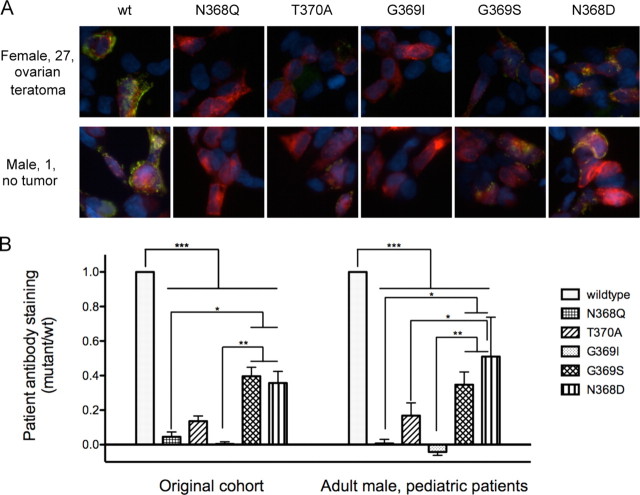Figure 7.
Adult male and pediatric patients show similar reactivity to GluN1 mutants as the original adult female patient population. A, Example staining patterns of a patient from the originally identified patient population (female with ovarian teratoma) and a more recently identified patient (pediatric male). B, Quantification of staining patterns in patients that match the original cohort (n = 9–11 patients) and those that have been identified more recently (males and pediatric patients without tumors, n = 7 patients). The patient population does not contribute to the variability within the samples (0.01%, p = 0.82, two-way ANOVA); most variability is accounted for by the GluN1 mutant (76.71%, p < 0.0001). Most of the significant differences between GluN1 mutants are identical between the two cohorts: wild-type versus all mutants, p < 0.001 to p < 0.0001; N368Q and G369I versus G369S and N368D, p < 0.05 to p < 0.0001. However, the differences between T370A and N368D are significant in the male/pediatric cohort (p < 0.05) but not the original (p > 0.05). *p < 0.05, **p < 0.01, ***p < 0.001.

